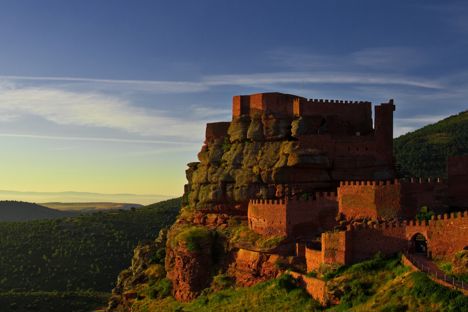
The ultimate foodie guide to Aragon and Catalonia
The areas inland from the northern Mediterranean coast of Spain may not get as much attention as other parts of the country when it comes to food, but they are in fact rife with exceptional produce and well worth exploring. We find out more about what these regions have to offer.
The ultimate foodie guide to Aragon and Catalonia
The areas inland from the northern Mediterranean coast of Spain may not get as much attention as other parts of the country when it comes to food, but they are in fact rife with exceptional produce and well worth exploring. We find out more about what these regions have to offer.
While the Mediterranean coast of Spain is familiar to many, the areas inland of the northern Mediterranean are far less so. And here is where we are missing out. The inland part of the province of Girona and the landlocked province of Lleida in Catalonia, and the provinces of Teruel and Zaragoza in the autonomous community of Aragon, are all full of great food and drink that you may not be aware of.
One of the highlights of the area is the excellent olives and olive oils, all PDO and PGI-certified. The variety that shines in these parts of Catalonia is the Arbequina olive, named after the village of Arbeca in the Les Garrigues area of the province of Lleida. Nowadays it is grown in various parts of Spain and elsewhere in the world, but its home territory is where it produces one of the best olives and extra virgin olive oil. In Aragon the favourite variety of the Bajo Aragon producers is Empeltre, named after the Aragonese word impelte or graft, as the olive tree variety has very low roots and graft is needed for reproduction. Like Arbequina, Empeltre produces an extra virgin olive oil that is well known for its delicate fruity taste, while the olives themselves are increasingly popular. Extra virgin olive oil is an essential ingredient in this part of the world for cooking all types of savoury dishes, as well as baking bread and some sweet dishes. Bread with olive oil is a popular breakfast or snack and the regional speciality of pa amb tomaquet bread rubbed with sliced tomato and drizzled with extra virgin olive oil, is now a favourite on menus across the whole of Spain.
The whole area is also well-known for high quality meat and charcuterie. In Aragon they have such an appreciation for lamb that they have PGI protected status for lamb from three specific breeds of sheep: Rasa Aragonesa, Ojinegra de Teruel, and Raya Bilbilitana, which is known as Ternasco. It’s a regular feature on menus across Aragon and is normally roasted or flame-grilled, and accompanied with potatoes and a glass of local garnacha wine. In the Catalan Pyrenees there is PGI protected status for their beef from certain traditional breeds of cattle, such as Aubrac or Gasconne and this status is proudly displayed in restaurants and butchers who sell it. In charcuterie, the Catalan town of Vic is famous for all types of different cured meats, the most famous being the PGI Salchichón de Vic, while the province of Teruel has its D.O. protected Teruel ham, a Serrano ham made from the white pig breed.
Of equal importance to their meat and charcuterie are the traditional accompaniments and Catalonia has its special PGI-status Santa Pau beans that are cooked and then refried with garlic and parsley, before being served alongside cooked meat and sausages. In Aragon meanwhile, white beans cooked with Ternasco sausages are a popular home cooked dish.
Apart from its ham and its oil, one of the newest and increasingly important products in the province of Teruel is the highly prized black truffle, tuber melanosporum. Its cultivation is only possible due to the high altitudes and arid ground that is characteristic of the province, and it is being hailed as the black gold of Teruel, given the amount of livelihoods the truffle is supporting.
Fruit is another big crop of the area; Calanda peaches have their own PGI protected status, but peaches are grown across various parts of Aragon and also in the province of Lleida and are just eaten plain or cooked with red wine and cinnamon. The other fruits of the area with protected status are PGI pears from Lleida and PGI apples from Girona, the latter having a long tradition in Girona of being stuffed and baked with dried fruits or cooked with chicken and pine nuts.
When it comes to wine, the whole area is famous for its reds, which are mostly made from the indigenous garnacha grape, a variety which spread all over the old kingdom of Aragon in the Middle Ages and is now being best showcased at the high altitudes of Aragon in D.O.s such as Calatayud, Cariñena and Campo de Borja. The D.O. Costers del Segre near Lleida on the banks of the Segre river has a reputation for making some of the most daring and innovative wines in Spain, while the D.O. Empordá is known for having a wide range of very small producers making their own unique reds, rosés and sparkling wines.
Not as well known as either the Mediterranean coast nor the inland Spanish Meseta, this area of Spain is one that is well worth exploring for unique produce and food traditions, and the inquisitive foodie will find plenty to keep them happy.

